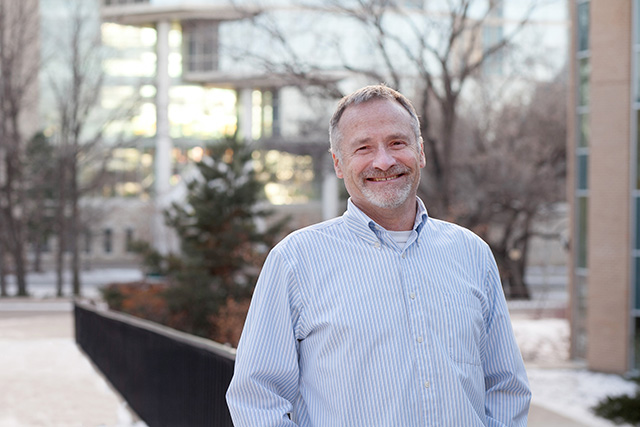
New centre expands circle of contact
Joe Stookey loves talking to beef cattle producers – anywhere and any time. If there are beef cattle in the background, he loves it even more. And if he’s going to have coffee, he thinks there is nothing better than to have it with fellow cattle producers.
By HenryTye GlazebrookBut he also worries that by only having producers around the table these conversations might overlook important – and economically valuable – points of view that might come from the general public.
“Agriculture is less than two per cent of the population, and livestock production and beef production is even less than two per cent, so you need to expand your circle of contact and conversation,” says Stookey. “If the only people you sit around the coffee table with is other producers, I’m afraid you’re going to miss out.”
That belief is where the Livestock and Forage Centre of Excellence (LFCE) comes into play. Planned as an umbrella organization that brings nearly all areas of the livestock industry together for research, education and extension, the LFCE is exactly the kind of forward-thinking approach that Stookey gets excited about.
The newfound degree of teamwork between researchers and producers, in particular, is something Stookey says has huge potential to breed greater output from all parties.
“I think it’s good because there’s a buy-in from producers to begin with. When you get that kind of support and that kind of collaboration and agreement between researchers and producers, that’s a good model — that’s a very good model,” he says. “The tech transfer … is sort of one step closer because they already have a tight relationship. The producers are going to want to see results and pay more attention and the researchers are going to be more accountable to the producers in seeing that through.”
Stookey specializes in the maternal and social behaviours of cattle. He and members of his research team investigate production practices like castration, de-horning and weaning — exploring new methods that minimize the effects of those methods on livestock.
“My interest crosses the behaviour and welfare realm. Behaviourally I’m interested in maternal behaviour – everything from birth to weaning. I’m interested in social behaviour and ways to minimize the stress of procedures,” Stookey says.
He points to procedures such a contact weaning, which uses only a thin fence to separate calves from their mothers as they begin to thrive on food sources other than their milk. It’s one example of a “U of S-grown” solution that has gone on to be adopted as standard practice in many parts of the world. And since then, Stookey and his research students have taken that initial idea one step further to establish two-stage weaning — a process that minimizes weaning stress for calves and their mothers.
“That was developed here with my students and myself. We hang a plastic nose tag that shuts off the ability to nurse on the calf. What that does is it weans them in the presence of each other,” explains Stookey.
“They wear it [the nose tag] for five days so they’re able to stay with their mother. They go for five to seven days without nursing, then we separate them and they’re fine with that. It’s amazing.”
Stookey’s own work on weaning is precisely the kind of area where he thinks greater communication provided by the LFCE will be hugely beneficial to producers and researchers. The centre’s efforts will also appeal to the consumers who are increasingly concerned about animal welfare and want to know what the livestock industry is doing to address these critical issues.
“It’s got a lot to do with humane treatment and handling and rearing, and those are the things that people are aware of. They’re hot button topics,” says Stookey. “The consumers sort of know that these procedures take place. They want to know we’re doing it for good reasons, and we’re doing it as humanely as possible.”
